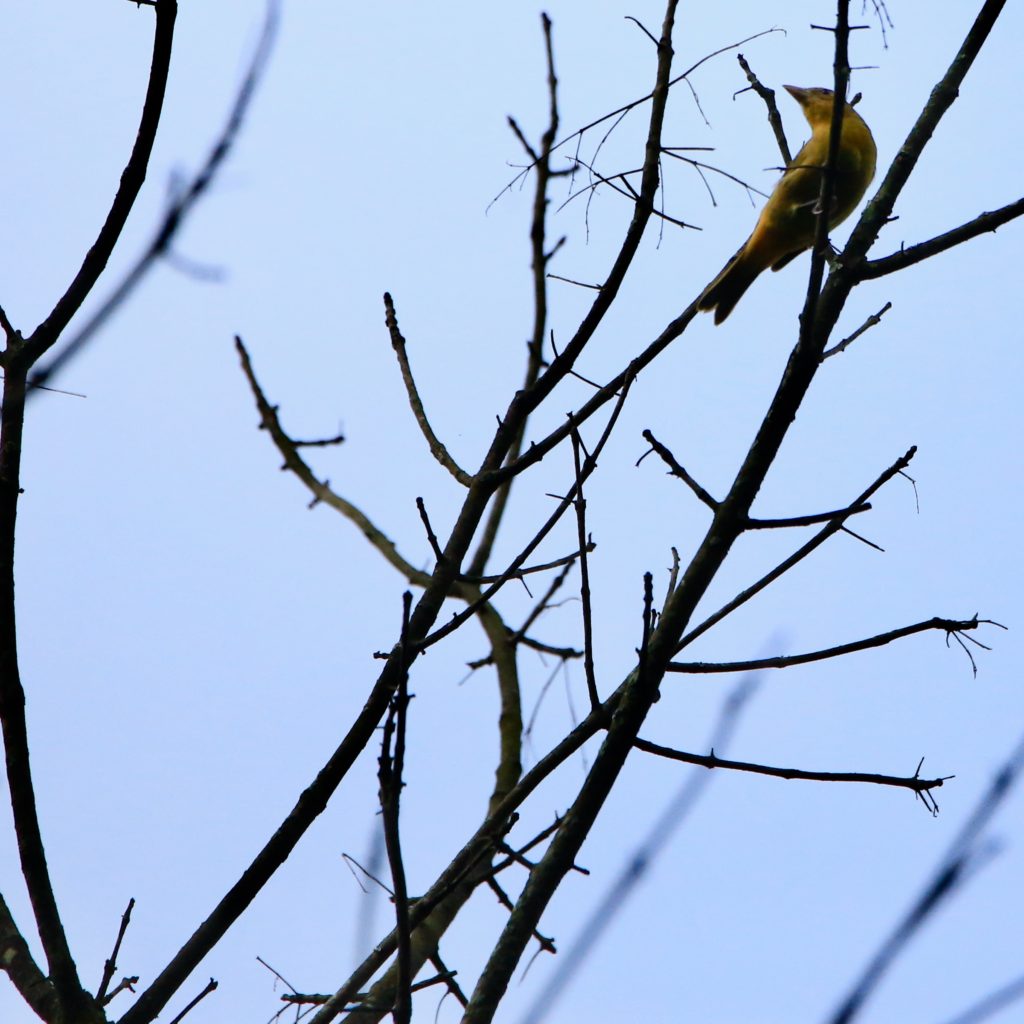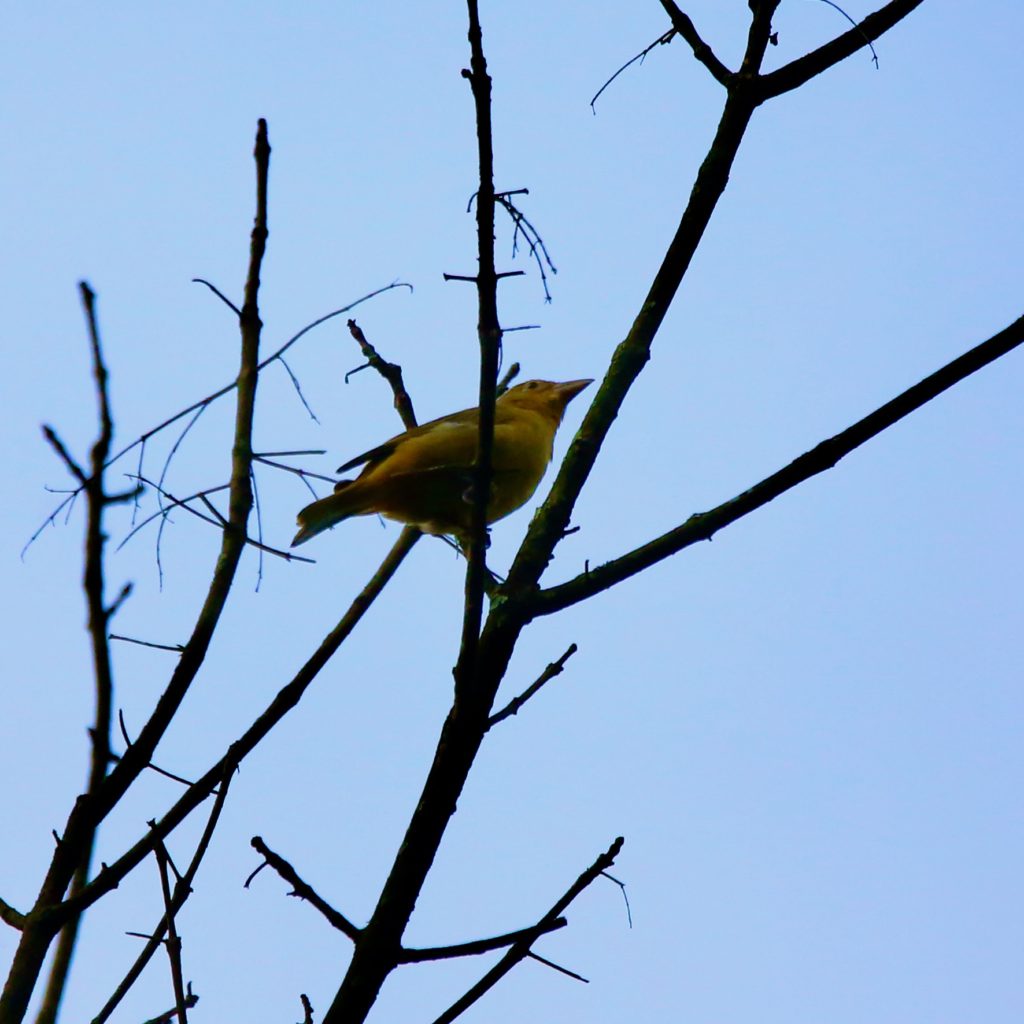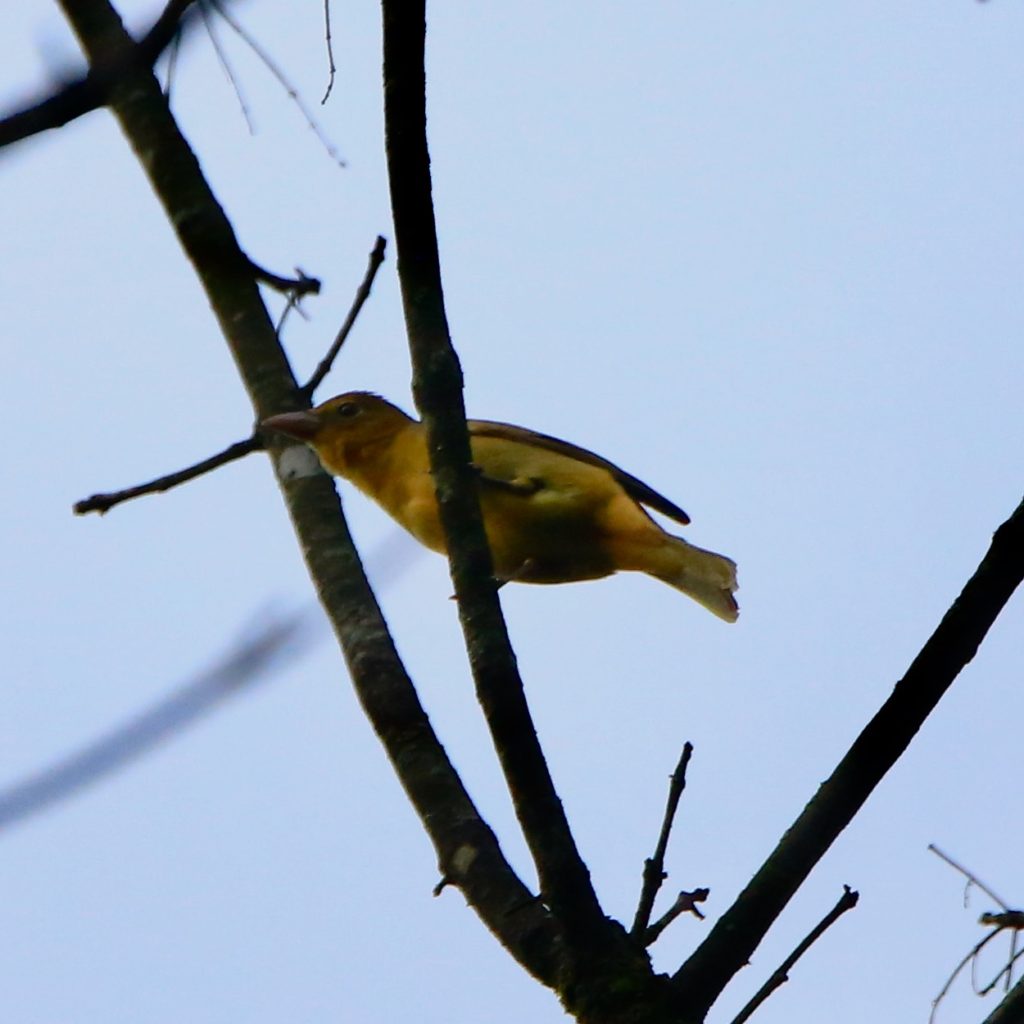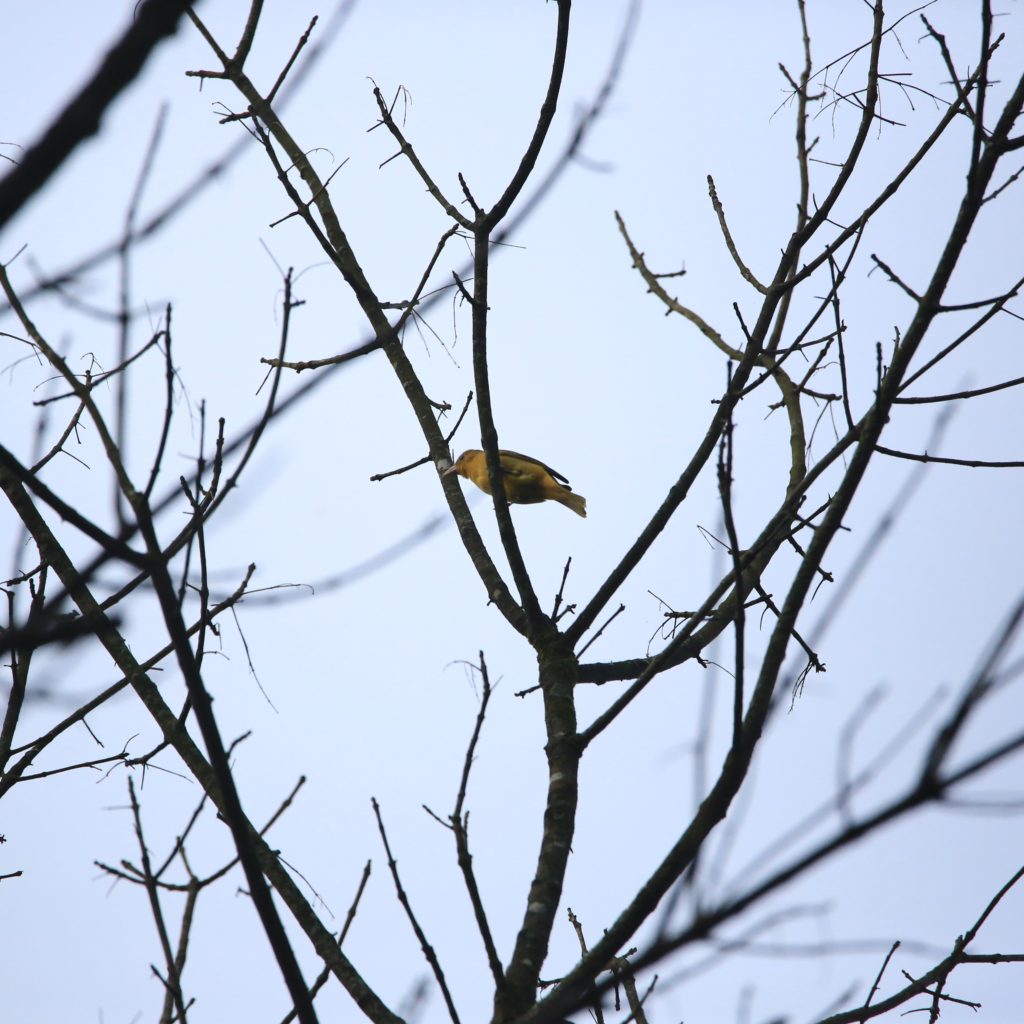
Summer Tanager
A Summer Tanager is a fun bird to see while bird watching. Below are some tips to help you identify Summer Tanagers. We have also put together a list of fun Summer Tanager t-shirts, Summer Tanager bird patches, bird houses, bird feeders, binoculars, stickers and other fun bird watching items.
About Summer Tanagers
This is a songbird found in southern United States, Mexico, Central America, and Northern South America.
Description and Identification
Summer Tanagers have a characteristic fiery red plumage that sets them apart from other birds. They have a large head, a large pale yellow bill with a blunt tip, and a lean body. Although the males and females generally have the same size, the color of their plumage differs. Except for the presence of a blackish-gray wash on the primary flight feathers and a faint gray wash on the wings and tail tips, the males are bright strawberry red. In bright sunlight, the males mostly appear completely red. The only similarity in color between the males and the females is the gray wash
on the wings and tail tips. Otherwise, they are yellow-orange or mustard yellow in color with a dark olive-green tint on their upperparts. Juvenile Summer Tanagers look similar to adult Females.
Summer Tanager Appearance
Adult males are bright rose-red with a long stout brown bill. Females, on the other hand, are less bright with a greenish-brown color on their upper side and an orange-like color on their underparts. They get these colors as a result of their diet.
Summer Tanager Size
Both the males and females are similar in size and weight.
- Weight – 29 grams
- Length – 17 centimeters
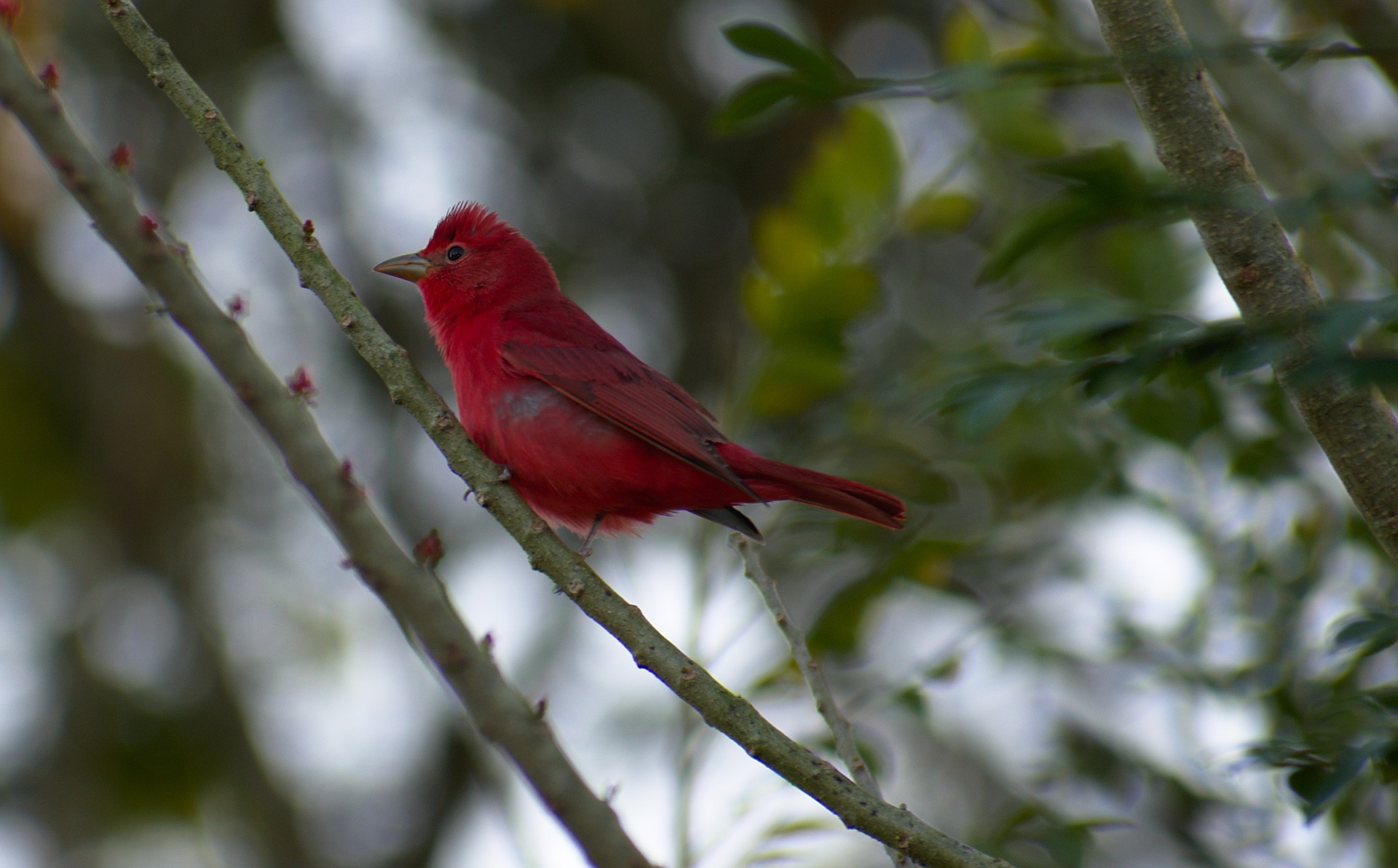
Summer Tanager Feeding
The majority of the diet of Summer Tanagers consists of insects and bugs. They feed on bees,
wasps, cicadas, grasshoppers, and a variety of beetles. When there is a lack of insects, they
switch to berries and fruits. They eat fruits such as mulberries, blackberries, Cecropia, bananas,
and citrus fruits. Summer Tanagers forage on the uppermost branches of trees, often jumping over
and over at insects from the same perch. To obtain fruits they may fly and pick individual fruits, or
pluck from a perched position.
The Summer Tanagers mainly feed on insects and their favorite meals are wasps and bees. They may at times feed on berries depending on their nutritional requirements.
They may also feed on human-altered habitats and occasionally from bird feeders.
Summer Tanager Habitat
Summer Tanagers like nesting in gaps and edges of pine-oak and deciduous forests, as well as in
riparian areas during the breeding season. Their habitat also depends on the region they reside in.
Summer Tanagers in the Southwest breed in higher-elevation mesquite and salt cedar stands, and
low-elevation willow and cottonwood woodlands. During migration, they rest in parks, gardens, and
beaches, as well as in habitats similar to those of their breeding range. Their wintering grounds are
often located in open habitats.
They mainly reside in areas with trees such as oaks and prefer open wooded areas.
Range and Migration

Summer Tanagers are large fiery red songbirds widespread in North America. These birds are
seasonal migrants. Their breeding range extends from the Ohio River Valley to New Mexico,
Arizona, and southeastern California, sometimes even into northern Central Mexico. They have a
very extensive winter range, which stretches from Central Mexico to Bolivia to Brazil.
Summer Tanager Life and Behavior
They mostly prefer to stay out of sight and hide within the trees that they inhabit. They only come out to get food and snatch up insects, then they return to their nests. The nests are built on horizontal branches and are cup-shaped.
They communicate through sharp calls and songs. The summer tanagers are sometimes mistaken by bird watchers to be robins because of their songs.
During courtship, the male chases the female around to show his intentions. If the female accepts him, the two become a mated pair. Both of them actively participates in raising the young, starting from the next building, in which the male accompanies the female, but only the female builds it. The female lays 2 – 4 pale green or blue-green eggs. Later on, she incubates the eggs until they hatch, which is usually 11 – 12 days later after laying them.
Both of the parents feed the nestlings until they are mature enough to leave the nest. The age at which the young ones leave is still not clearly known.
Summer Tanager Nesting
Summer Tanagers are monogamous birds. Males sing or chase other birds in spring in order to
defend nesting territory. Females are chased by males in the early stages of courtship. Nests are
mostly located in a tree, often oak, cottonwood, or pine. Although female Summer Tanagers are
tasked with constructing the nests, they might be accompanied by the males when they are
gathering the material. The nest is built 10-35 feet off the ground, balanced on a branch towards
the end of the tree. The incubation period of the eggs is 11-12 days, during which the male might assist
the female by providing her food. Both members of the pair take equal responsibility for feeding
their younglings. The younglings are fed for about 3 weeks after hatching. Summer Tanagers
annually raise 1-2 broods.
Ornithology
Bird Watching Academy & Camp Subscription Boxes
At Bird Watching Academy & Camp we help kids, youth, and adults get excited and involved in bird watching. We have several monthly subscription boxes that you can subscribe to. Our monthly subscription boxes help kids, youth, and adults learn about birds, bird watching, and bird conservation.
Bird Watching Binoculars for Identifying Summer Tanagers
The most common types of bird watching binoculars for viewing Summer Tanagers are 8×21 binoculars and 10×42 binoculars. Bird Watching Academy & Camp sells really nice 8×21 binoculars and 10×42 binoculars. You can view and purchase them here.
Summer Tanager T-shirts
If you love the Summer Tanager you should purchase a Bird Watching Academy & Camp T-shirt. To help support bird conservation we donate 10 percent to bird conservation activities.
Summer Tanager Iron On Patches
Kids, Youth, and Adults love to collect our Bird Watching Academy & Camp iron on patches. Our bird watching patches help you keep track of the birds you have seen an identified. You can also display the patches on our Bird Watching Academy & Camp banners.
The Summer Tanager is a great iron on patch to start your collection with. The patches are durable and can be sewn on or ironed on to just about anything.
Summer Tanager Stickers
Stickers are a great way for you to display your love for bird watching and the Summer Tanager. We sell a monthly subscription sticker pack. The sticker packs have 12 bird stickers. These sticker packs will help your kids learn new birds every month.
Bird Feeders For Summer Tanager
There are many types of bird feeders. Here are our favorite bird feeders for your backyard. We use all of these bird feeders currently. Kids will have a great time watching birds eat at these bird feeders. Using this collection of bird feeders will provide a wide variety and many types of birds.
Best Bird Houses for Summer Tanager
There are many types of bird houses. Building a bird house is always fun but can be frustrating. These 4 bird houses have become our favorites. Getting a bird house for kids to watch birds grow is always fun. We spent a little extra money on these bird houses but they have been worth the higher price and look great.


